Portugal / República Portuguesa – Let’s explore here
What’s it like in Portugal?
Portugal is regularly rated as one of the best places to live in the world, due to its cost of living, access to healthcare, and relaxed lifestyle. You can even apply to stay and work for an extended time as a digital nomad.
It’s is a beautiful country, with a rich history that has influenced large parts of the world. There are loads of amazing sights, and it has a variety of landscapes. It’s particularly popular for its endless beaches bordering the Atlantic, year round sun, and amazing food. Its highest point on the mainland is Torre in the Serra da Estrela mountain range, in the centre of the country, at 6,539 ft (1,993m) above sea level.
Its only neighbour is Spain and its population is around 10½ million people (2023), almost a third of whom live in and around the capital, Lisbon.


A bit about the history of Portugal
Early History and Formation of Portugal
The history of Portugal dates back to ancient times when it was inhabited by Celtic tribes. The region was later conquered by the Romans in the 2nd century BC, becoming part of the Roman Empire as the province of Lusitania. After the fall of Rome, the area was invaded by various groups, including the Visigoths and Moors. In the 12th century, Portugal emerged as a kingdom, with Afonso I (Afonso Henriques) becoming the first King of Portugal in 1139, after a series of military victories against the Moors and his claim to independence from the Kingdom of León.
Medieval and Early Modern Period
Portugal expanded its territory during the Middle Ages, gradually pushing the Moors out and consolidating its position as a Christian kingdom. By the 15th century, Portugal had become a leading European maritime power, with a focus on exploration. Portuguese explorers, such as Vasco da Gama and Bartolomeu Dias, were instrumental in establishing sea routes to India, Africa and Brazil, laying the foundation for the Portuguese Empire.
The Age of Exploration and the Portuguese Empire
The 15th and 16th centuries marked the height of Portuguese exploration and colonisation. Portugal established a vast colonial empire in Africa, Asia and South America, with Brazil becoming its most valuable colony. The empire’s wealth brought prosperity to Portugal, and Lisbon became one of Europe’s most important cities. However, by the late 16th century, Portugal faced internal challenges and external threats, including competition from other European powers and the eventual loss of its Asian and African territories.
Dynastic Crisis and Spanish Rule
In 1580, after the death of the Portuguese king, King Henry the Cardinal, without a direct heir, the Spanish King Philip II claimed the Portuguese throne. This began a period of dynastic union with Spain that lasted until 1640. During this time, Portugal’s colonies suffered from neglect, and there was growing dissatisfaction with Spanish rule. In 1640, a successful revolution led by Portuguese nobles restored Portuguese independence and ended the union with Spain, with the establishment of the Braganza dynasty.
Decline of the Portuguese Empire
The 18th century saw economic and political instability in Portugal, which was exacerbated by foreign invasions, including French and British forces during the Napoleonic Wars. Although Portugal’s empire persisted throughout this period, it faced challenges due to European competition and internal mismanagement. In the 19th century, Portugal’s empire began to fragment, with Brazil gaining independence in 1822 and other colonies gradually following suit.
Republic and Dictatorship
In 1910, a revolution led to the overthrow of the monarchy, and Portugal became a republic. However, political instability marked the early years of the republic, with frequent changes in government and economic turmoil. In 1926, a military coup led to the establishment of a dictatorship under António de Oliveira Salazar. Salazar’s regime, known as the Estado Novo, lasted until 1974. It was marked by authoritarian rule, censorship, and limited political freedoms, though it also saw some economic modernisation.
Carnation Revolution and Modern Portugal
In 1974, the Estado Novo regime was overthrown in a peaceful coup known as the Carnation Revolution, which led to the establishment of a democratic republic. The revolution marked the end of authoritarian rule and set Portugal on a path toward modernisation, with significant political and social reforms. Portugal joined the European Union in 1986, which further facilitated its economic development.
21st Century Portugal
Since the 1990s, Portugal has faced various economic challenges, including a financial crisis in the late 2000s that required international assistance from the European Union and the International Monetary Fund. Despite this, Portugal has made significant strides in modernisation and development. Today, Portugal is a democratic republic and a member of international organisations such as the European Union, NATO, and the United Nations. It is known for its rich cultural heritage, tourism industry and vibrant economy.

Portugal road trip
Our Portuguese road trip was part of a much larger European road trip.
North east Portugal
For our road trip through Portugal, we travelled from Spain via the Parque Nacional Peneda-Gerês for our lengthy stay in the Duoro valley. What an excellent place the Duoro is! Fantastic villages, beautiful scenery, loads of friendly cafés and restaurants, and vineyards galore!
Not far south of the Duoro valley is the historic city, Vila Real, which sits on a plateau 1,510 ft (450 m) above sea level, and is surrounded by picturesque mountains.
Portugal’s second city
Near the coast, west of Vila Real, is Portugal’s second city, Porto. What a great city Porto is, with its historic buildings and excellent views. Although it’s packed with tourists, it’s definitely worth a visit.
Central Portugal
South of Porto is the pretty town of Coimbra, with its many Roman artefacts. Being a university town. its full of life and is bustling with students and tourists alike. Moving further southwards and you reach the amazing town of Tomar, which was the last town built by the interesting Knights Templars.
West coast of Portugal
Over on the west coast it’s a different world from central and northern Portugal. It’s almost a fall back to the hippy days of the early 1970s. It’s a surfers paradise and there are loads of camper vans parked up enjoying the sun and relaxing to good music. What a relaxing place it is!
The westernmost point in Europe is also on the west coast, Cabo de Roca. If you arrive later in the afternoon, you’ll avoid the mad crush and be able to take in the excellent views, and the gorgeous sunset!
The capital
Lisbon and its metropolitan area is a sight to see. Although unfortunately for us, we were robbed not long after arriving 🙁 Apparently this is really common in Lisbon, so watch out!
West of the capital though is Sintra, which is really pretty and very touristy town on a hill. Well worth a visit, although be warned, parking is a nightmare! We stayed close to Sintra, and the owner was super friendly and really informative about the area.
Having been robbed, we had to cut our European rod trip short short, in order to make our way back to the UK to replace our documentation. When we’d replaced our documents, we carried on though 🙂
Map of our road trip through Portugal
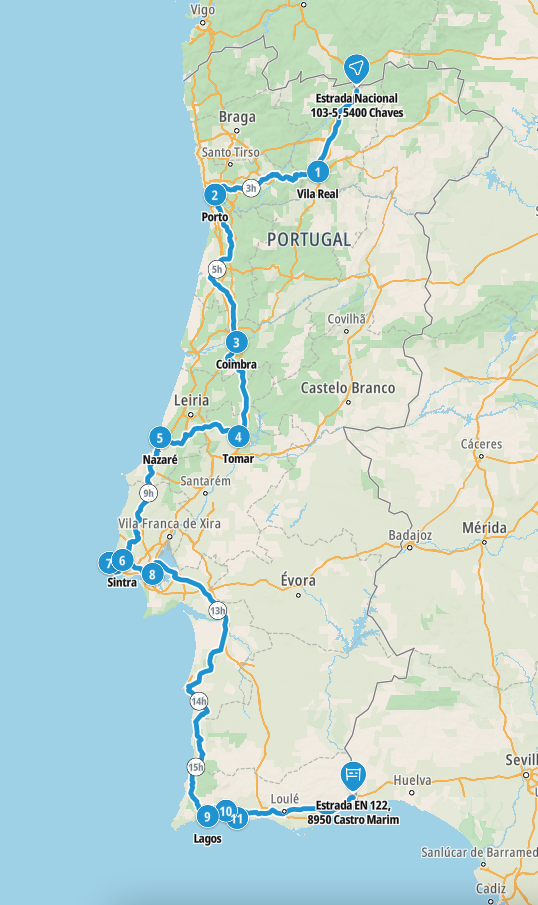
This is a map of our road trip through Portugal. Our route took us from the Parque Nacional Peneda-Gerês – Vila Real – Porto – Coimbra – Tomar – Nazare – Sintra – Cabo de Roca – Lisbon – Lagos – Ferragudo – Benagil cave – Algarve
Detailed map of our road trip around the Duoro valley

This is a map of the route that we took around the Douro valley in north east Portugal. It took us from Tabuaço – Pinhão – Vale de Mendiz – São Mamede de Ribatua – Tua – Linhares – Rota do Património da Humanidade – Peso da Régua – Miradouro de Sao Leonardo de Galafura – Tabuaço.
This definitely improved our knowledge of this intriguing and beautiful country, and enabled us to meet some really lovely and interesting people. It also raised our awareness of theft unfortunately, especially around tourist areas in Portugal!
Madeira road trip
Our road trip around the amazing island of Madeira was simply spectacular. there’s so much to see and do in Madeira, but it’s the incredible scenery that makes the island.
We visited in November and although this was definitely off-season, the weather was still quite warm, and you could still swim in the ocean. That time of year also meant that there was very little traffic on the roads outside of the capital – which was great for exploring the island and taking in the spectacular terrain.
The capital, Funchal, is busy all year around, and offers a Mediterranean feel, as well as loads of cafés and restaurants. There’s loads to see in the capital, and it’s definitely worth a visit. However during winter, most of the rest of the island, although still operational, is pretty quiet, and this you can experience it all as if you’re on a private tour of the island 🙂
We particularly liked Porto Moniz, with its huge waves and beautiful cliffs. It even had excellent, warm swimming pools in the ocean! The food was great too!
We also loved the interior of the island, with its fantastic mountains, and spectacular views above the clouds, just brilliant!
Map of our road trip through Madeira

Our road trip around Madeira took us from Funchal to Porto Moniz via many of the mountain passes, all of which are fantastic for driving on. We also circumnavigated the island.
Our favourite places in Portugal
These are some of the best places that we explored on our road trip through Portugal. We’ve put them in alphabetical order.
Cabo da Roca
Cabo da Roca is the westernmost point on mainland Europe. It can be super busy with tourists, and parking can be troublesome. We stayed overnight near to Cabo da Roca, and visited at around 16:30. At this time, many of the tourists and cars had left, and parking was very easy.
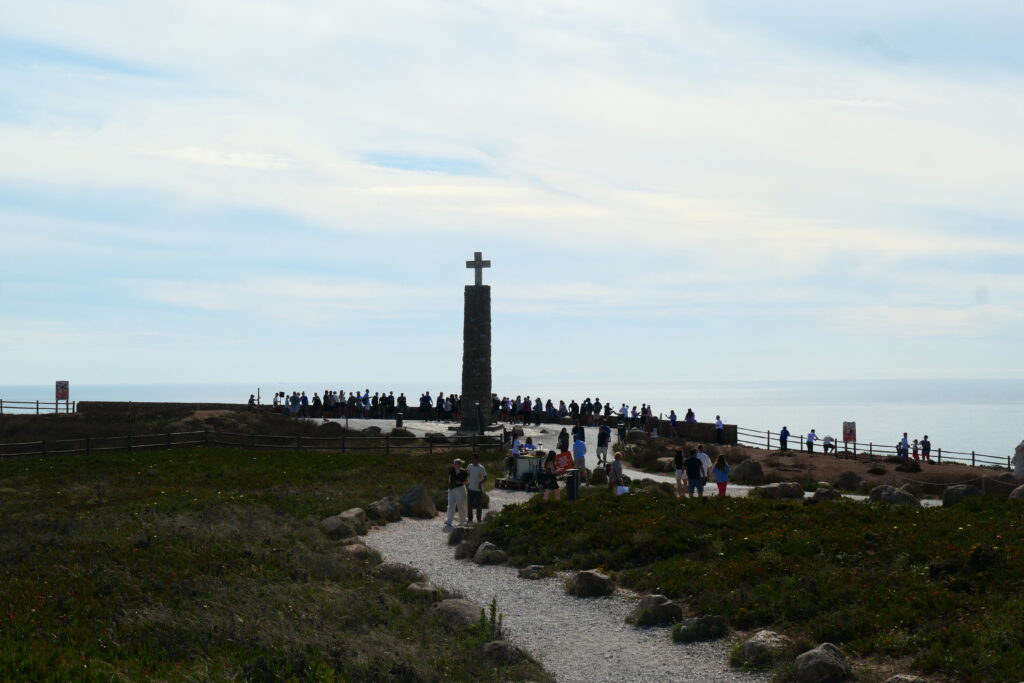

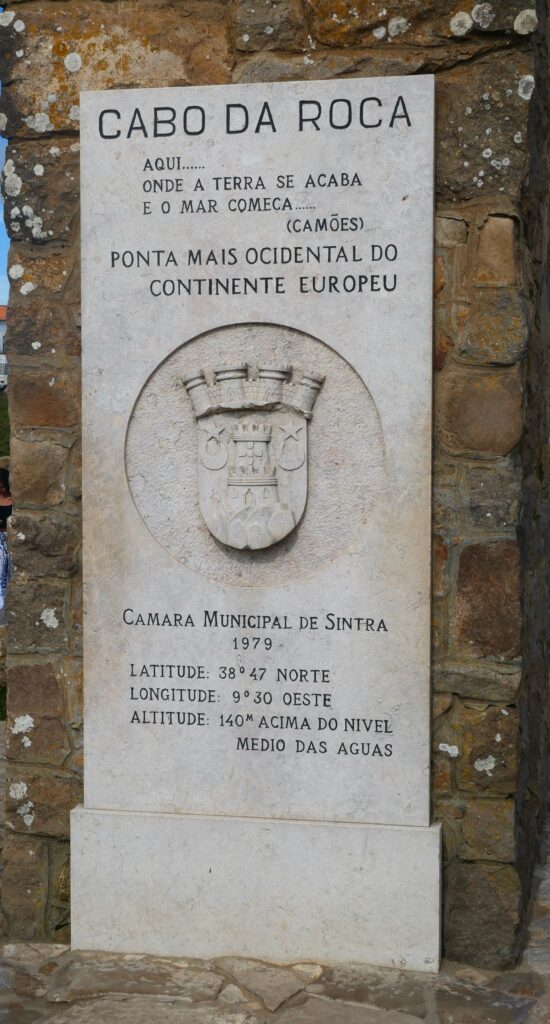

Coimbra
Coimbra is an ancient, small, picturesque city in central Portugal. It houses one of the oldest universities in the world and is a tourist hotspot that should not be missed. That said, it is also a place where pickpocketing is very common, so watch your valuables carefully, especially in the narrow alleyways!
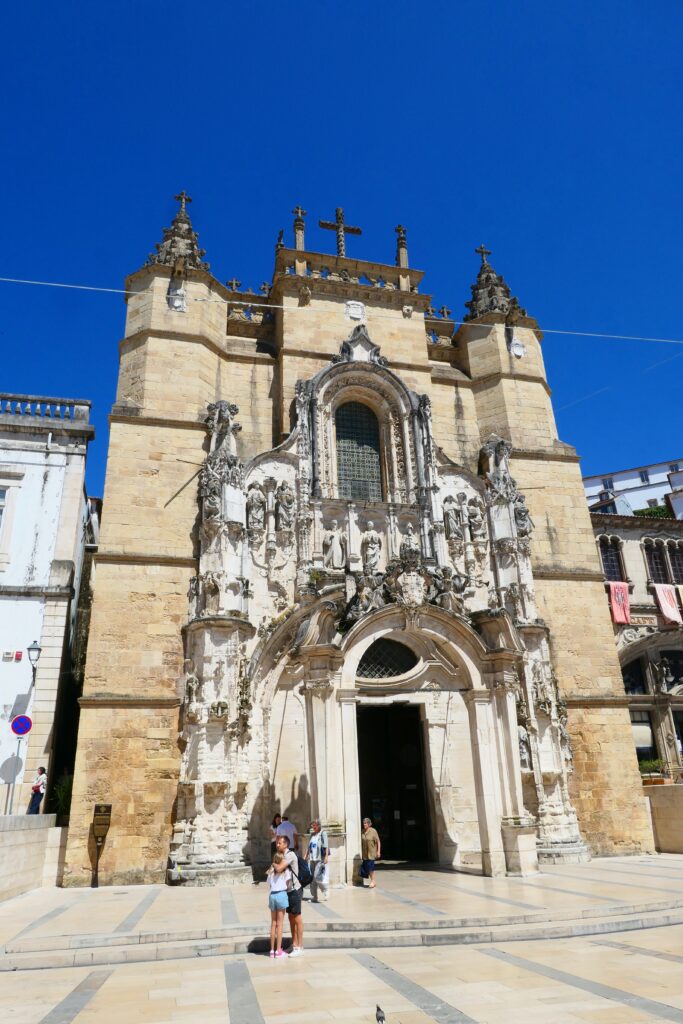

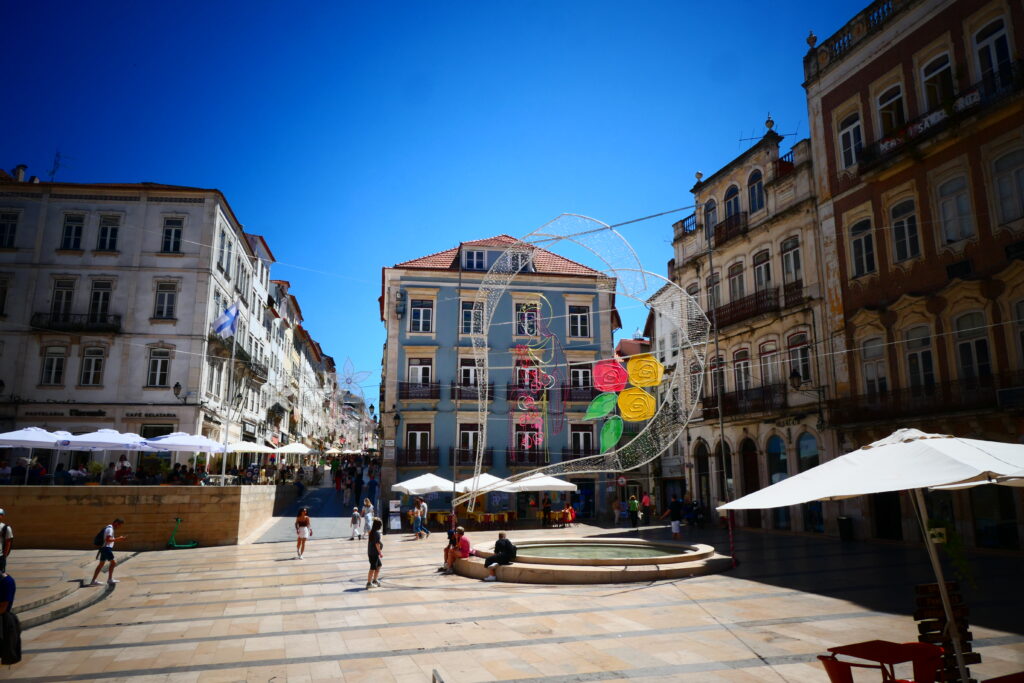
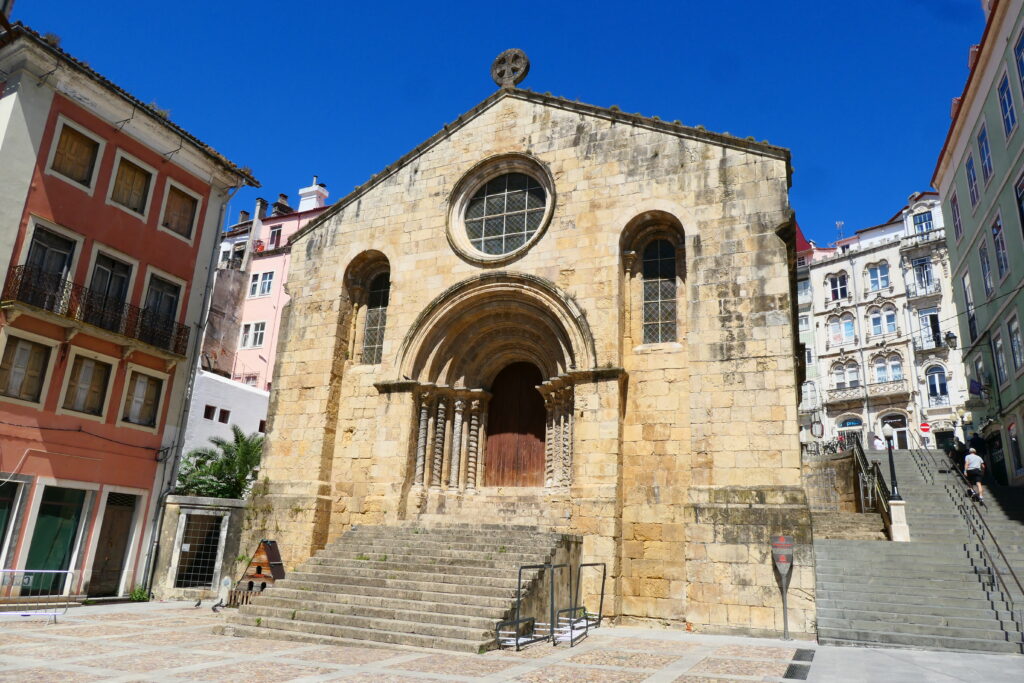
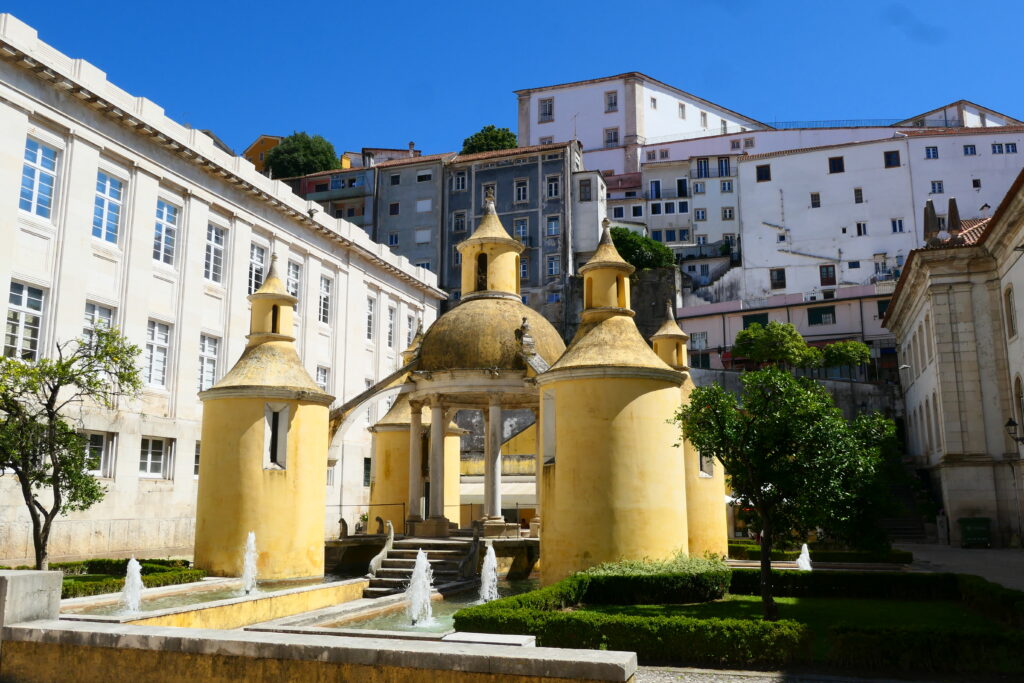

Douro valley
The Duoro valley is famous for its multitude of vineyards, which are divided into three broad areas: the Baixo Corgo, the Alto Corgo and the Duoro Superior. There are many small, pretty villages and towns, and great driving roads to cruise around admiring the fantastic scenery in the glorious sun.
The route that we took around the Douro valley took us from Tabuaço – Pinhão – Vale de Mendiz – São Mamede de Ribatua – Tua – Linhares – Rota do Património da Humanidade – Peso da Régua – Miradouro de Sao Leonardo de Galafura – Tabuaço. You can view the map above.

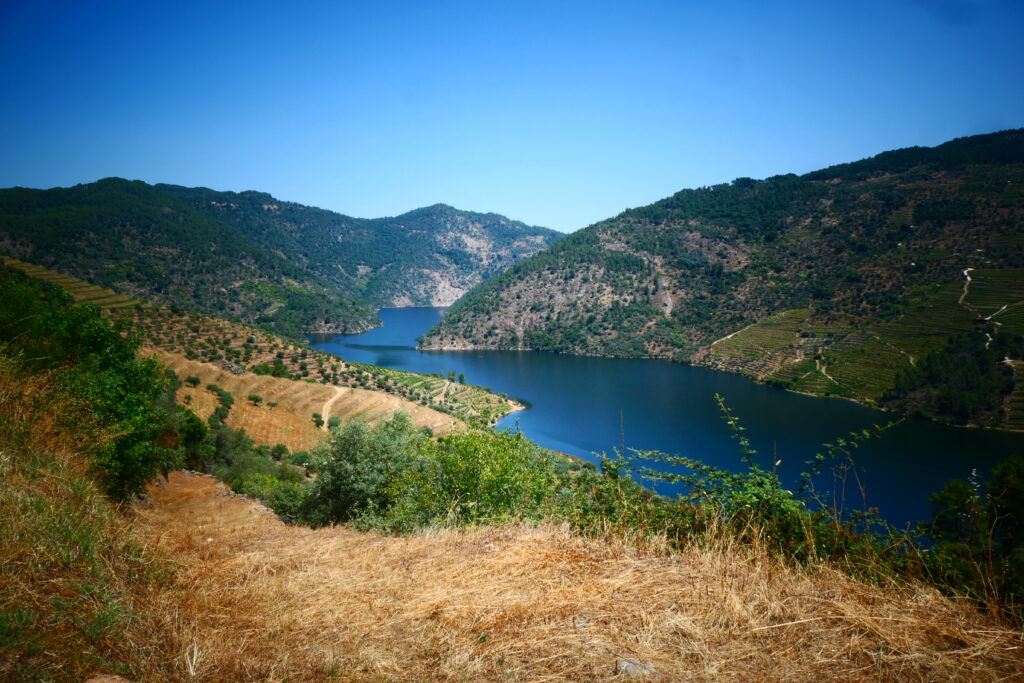


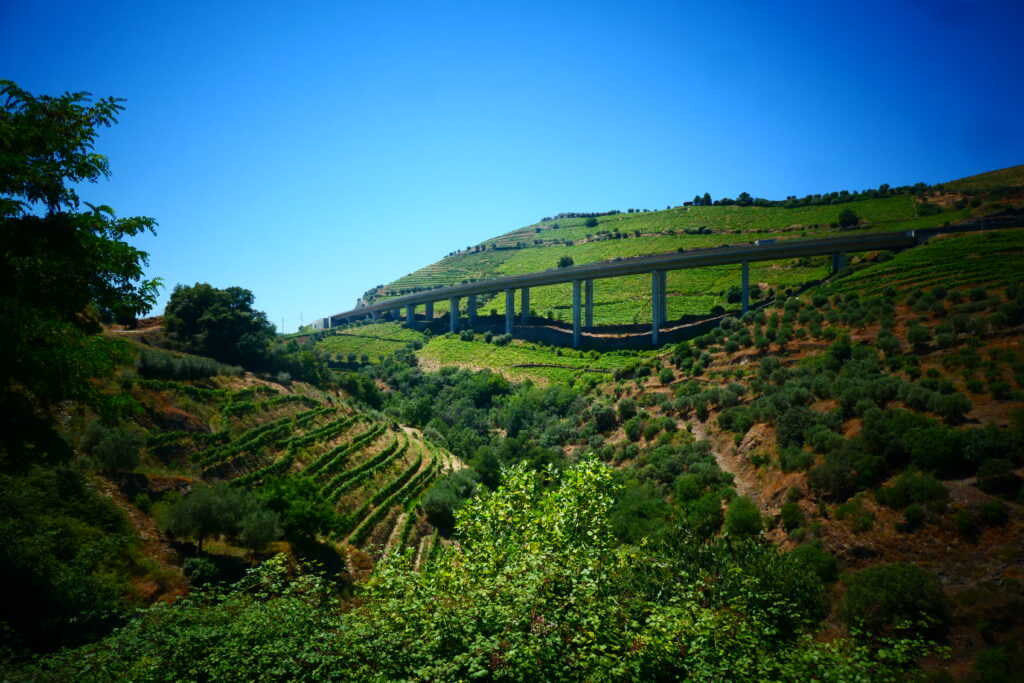
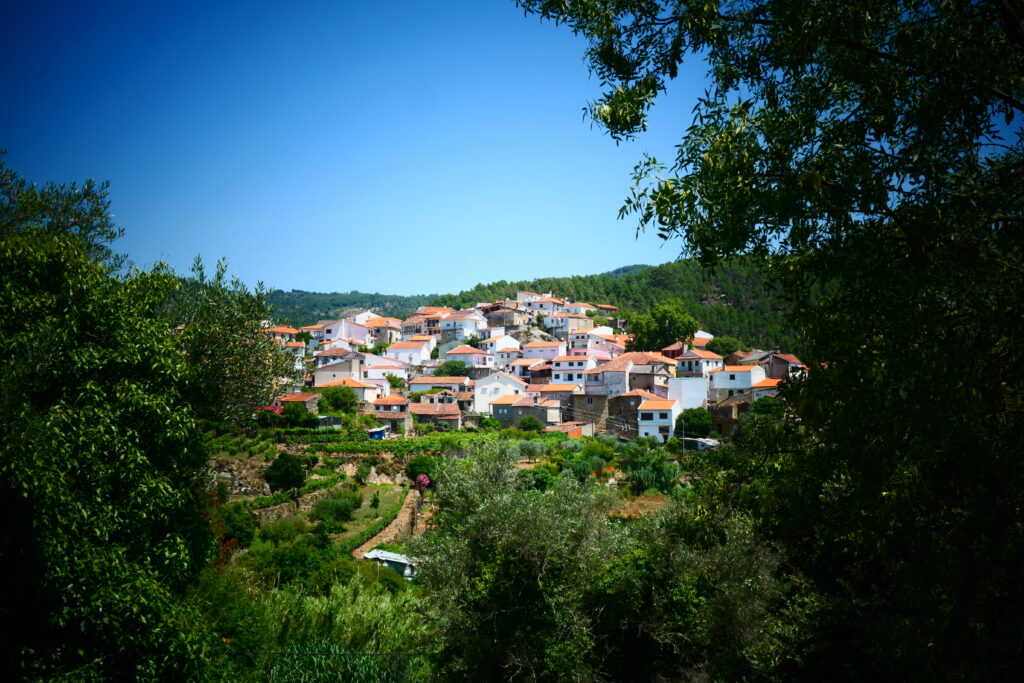

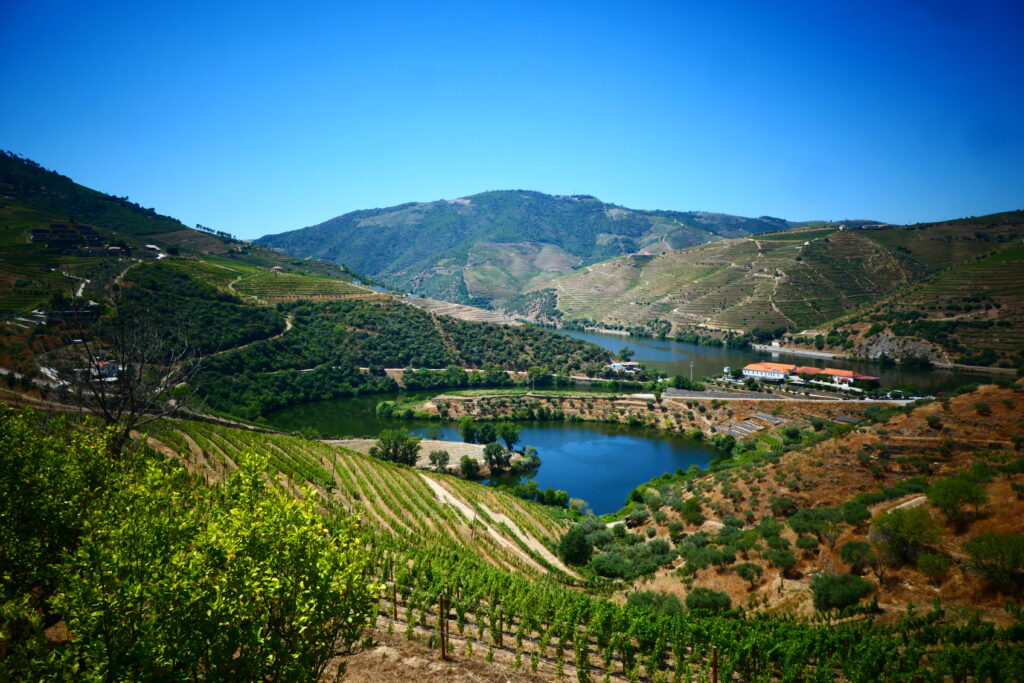
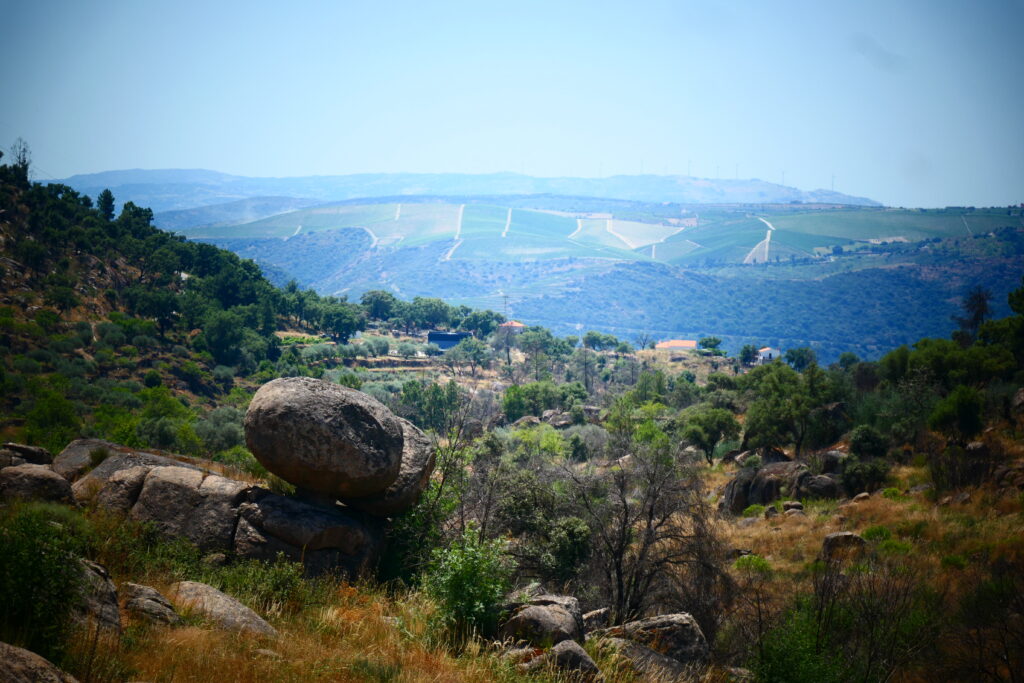

LIsbon
We were robbed in Lisbon, which apparently is super common, in particular on the transport networks. As such, understandably, it’s not one of our favourite places. Take care when in Lisbon!
Nazare
Nazare is a lovely, small, seaside town that sits on the west coast of Portugal. The beach is huge and super clean. Nazare is a haven for huge numbers of surfer enthusiasts due to experiencing some of the world’s largest waves. The waves are caused by to the presence of Europe’s largest underwater canyon, at 140 miles (230km) wide and 16,000 ft (5,000m) deep.
The day we visited the waves were a mere ripple in Nazare itself, although there were some small waves further down the coast towards Cabo da Roca at Miradouro Ribeira d’Ilhas, where there is also a great surfer statue.
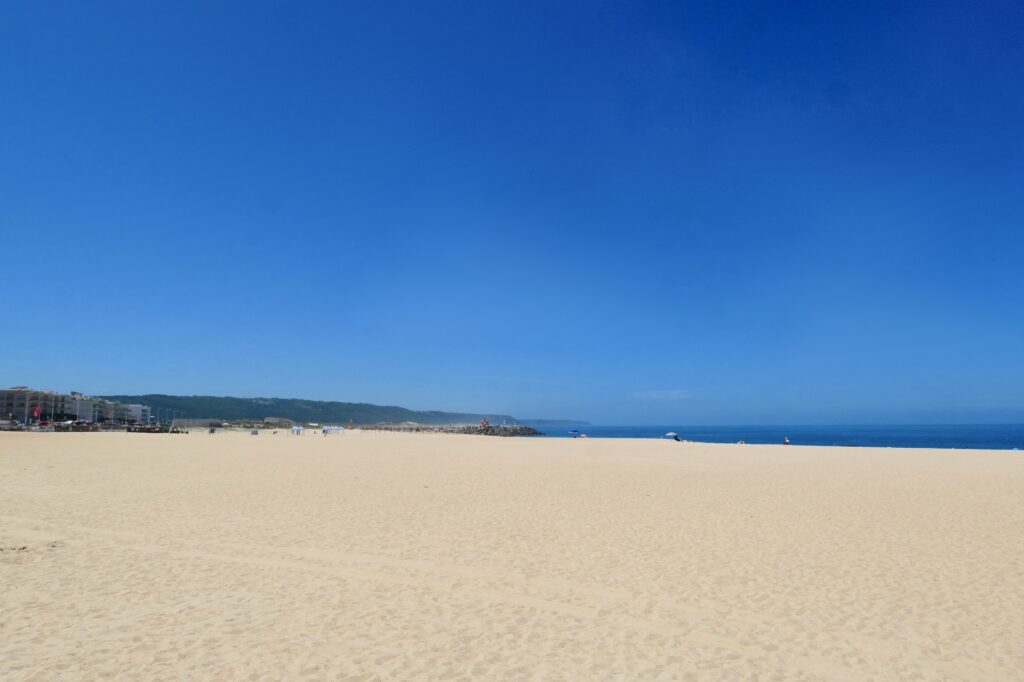


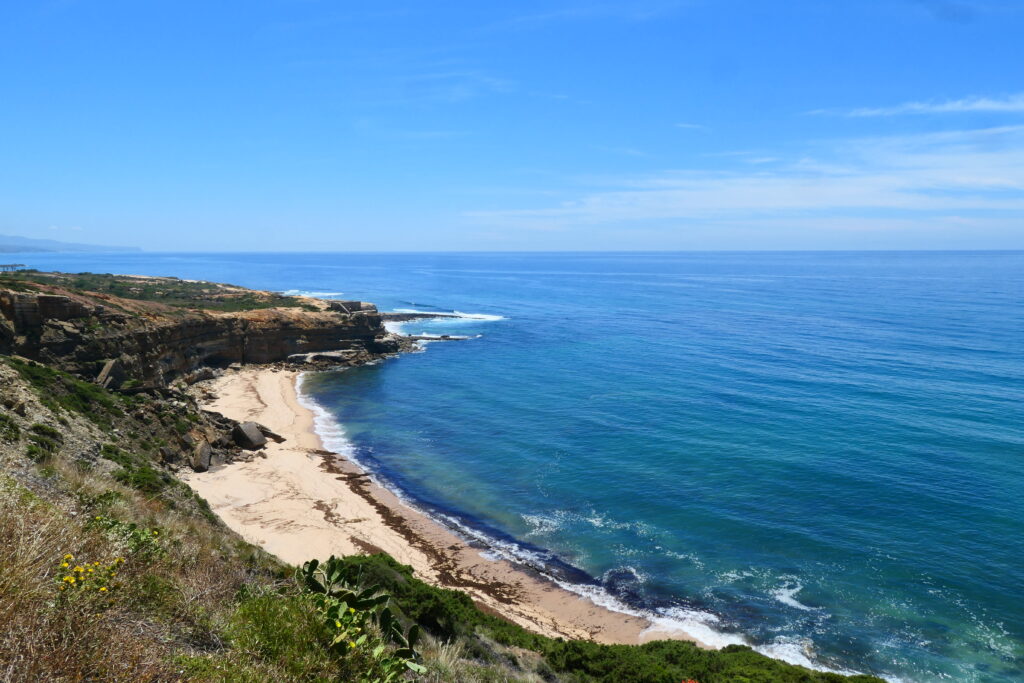

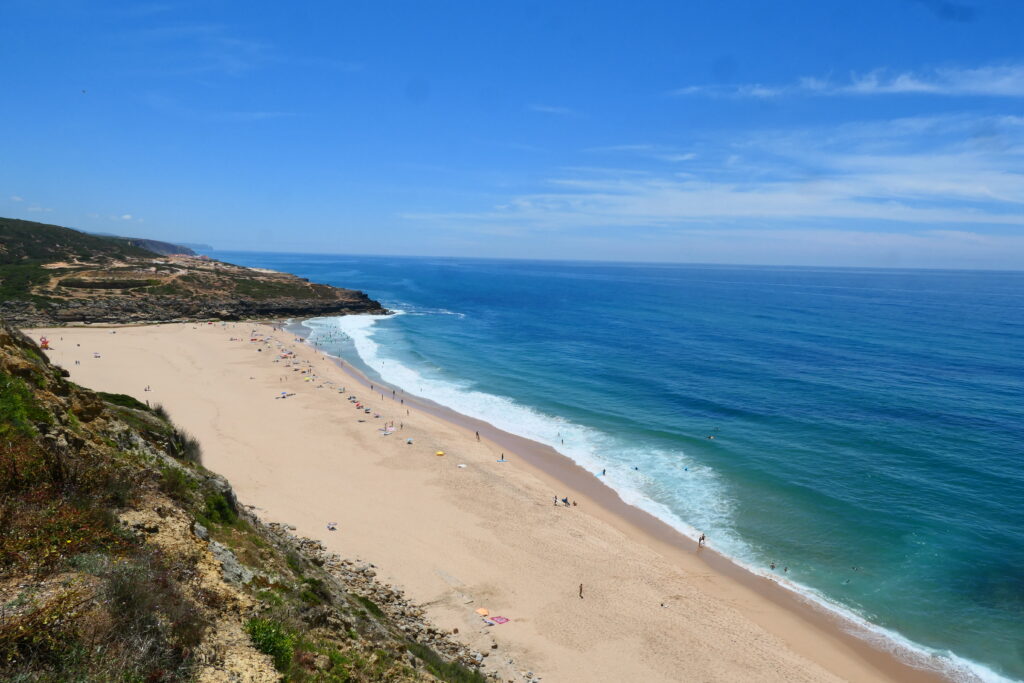

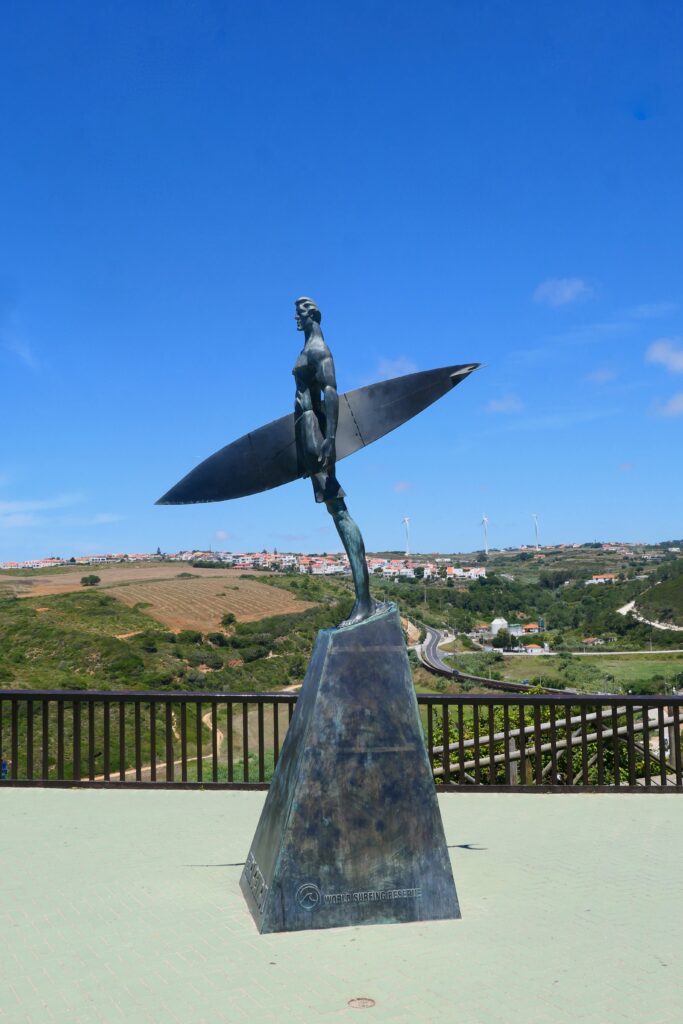
Porto
Porto is an amazing, ancient, coastal city in the north west of Portugal. Over 1.8 million people (2023) live in the metropolitan area, although the city itself is easily accessible and parking is also easy and cheap. It’s a lovely, relaxing city with a strong cafe culture and is well worth a visit.
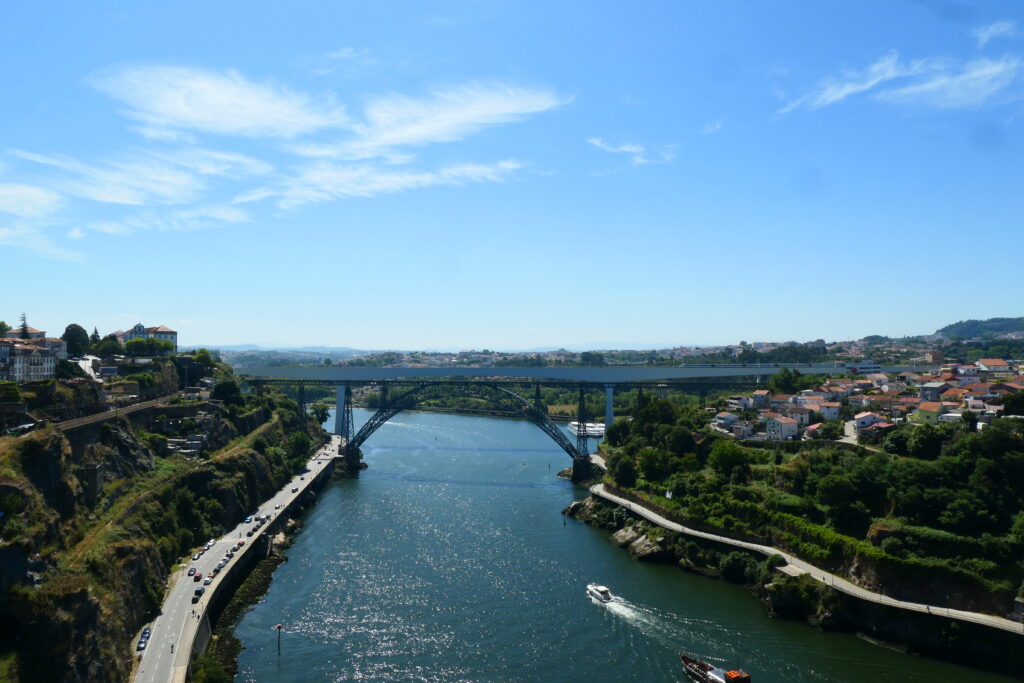
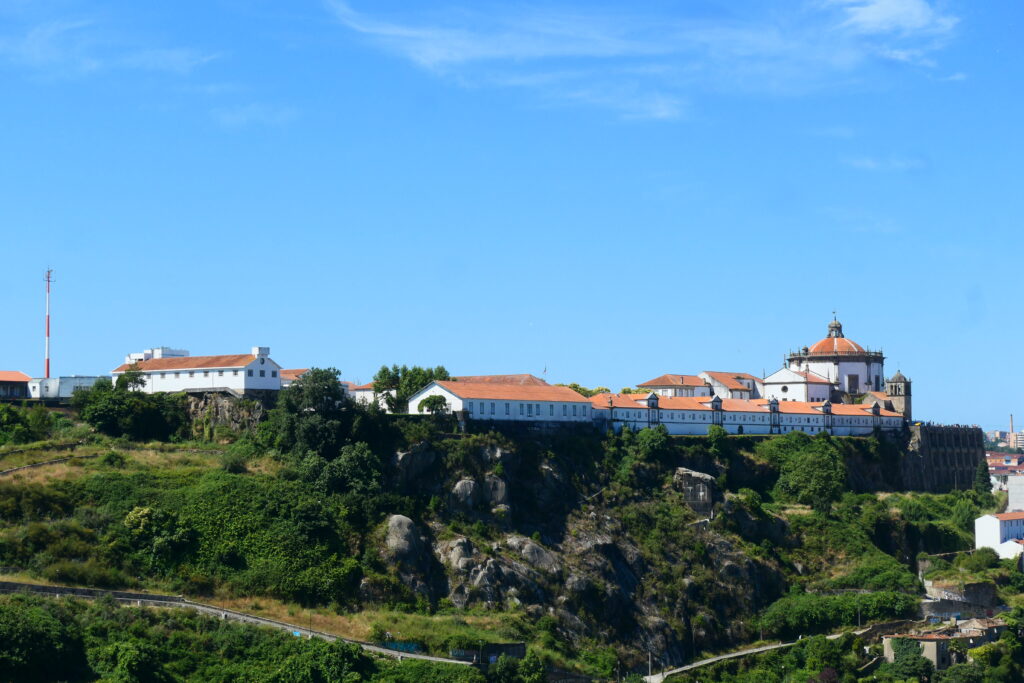
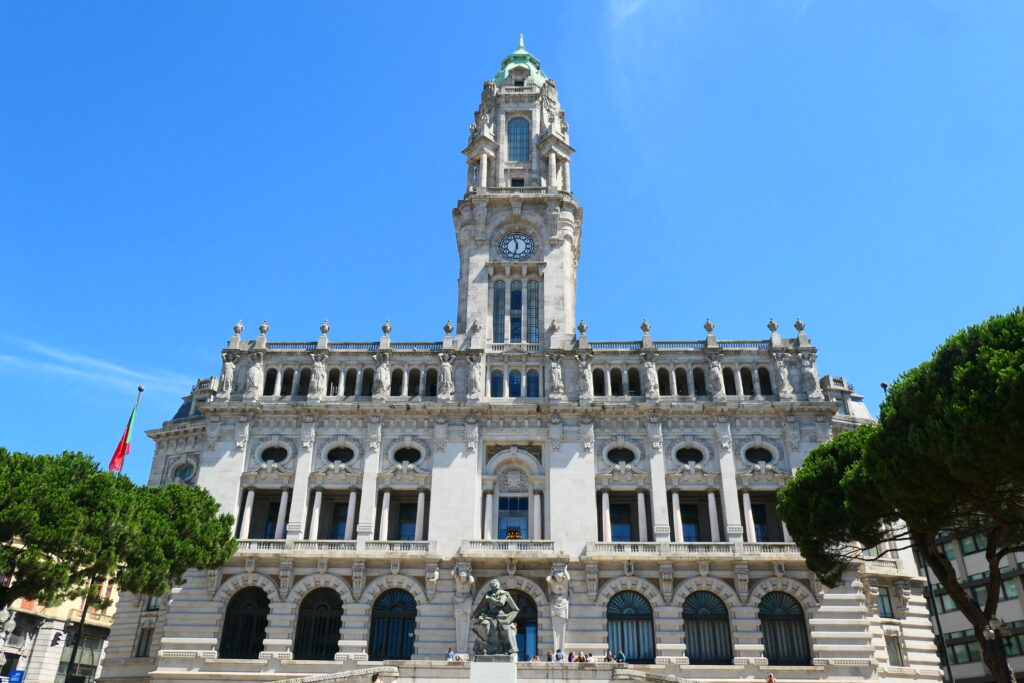
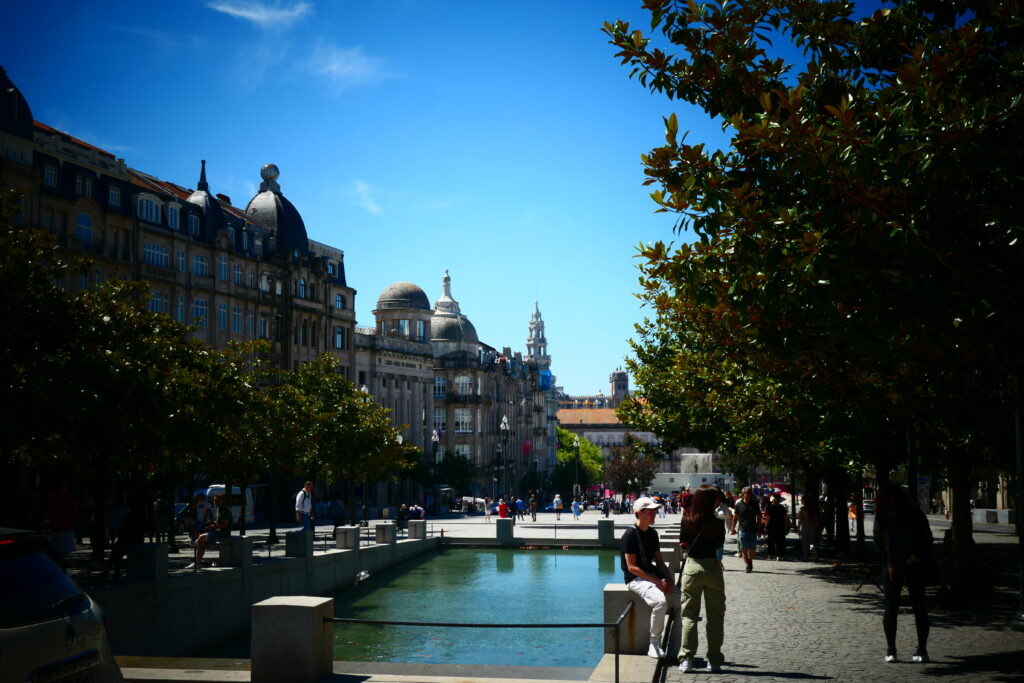
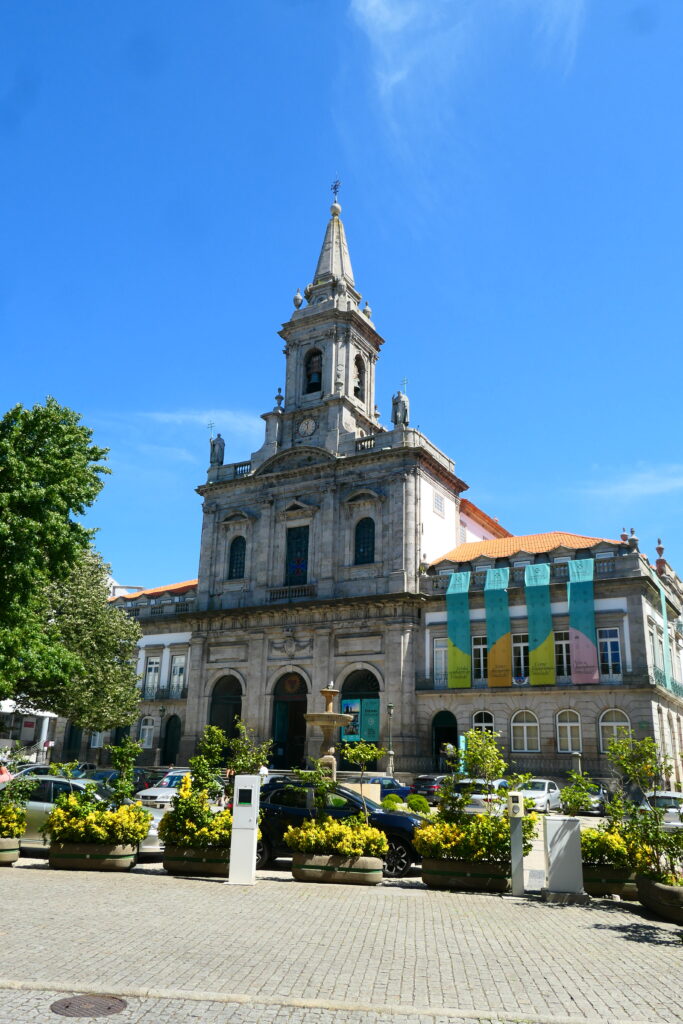
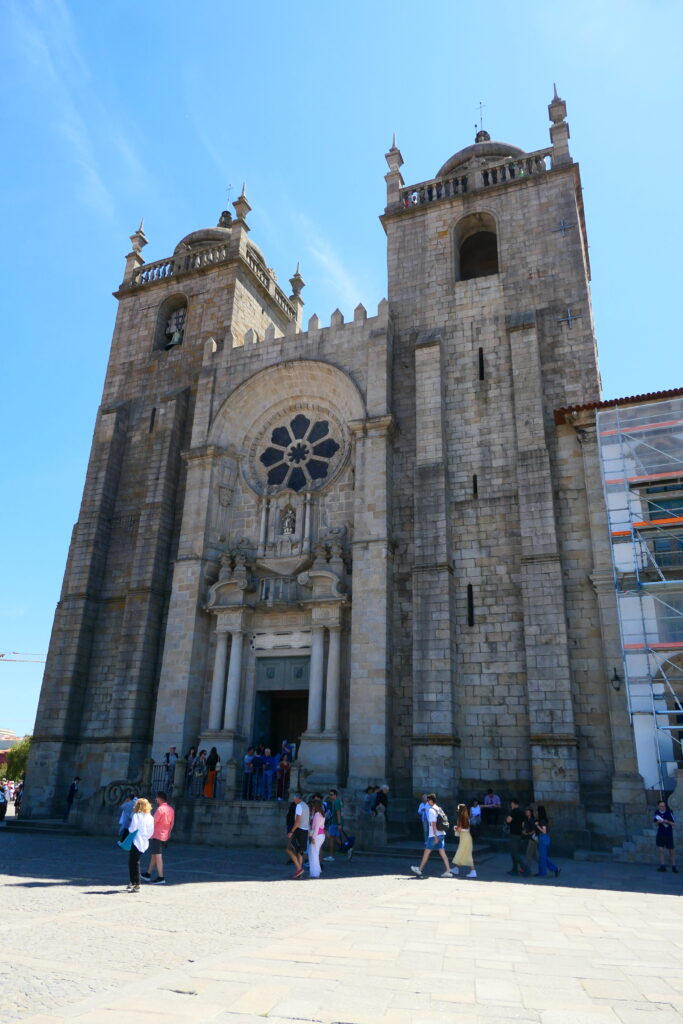
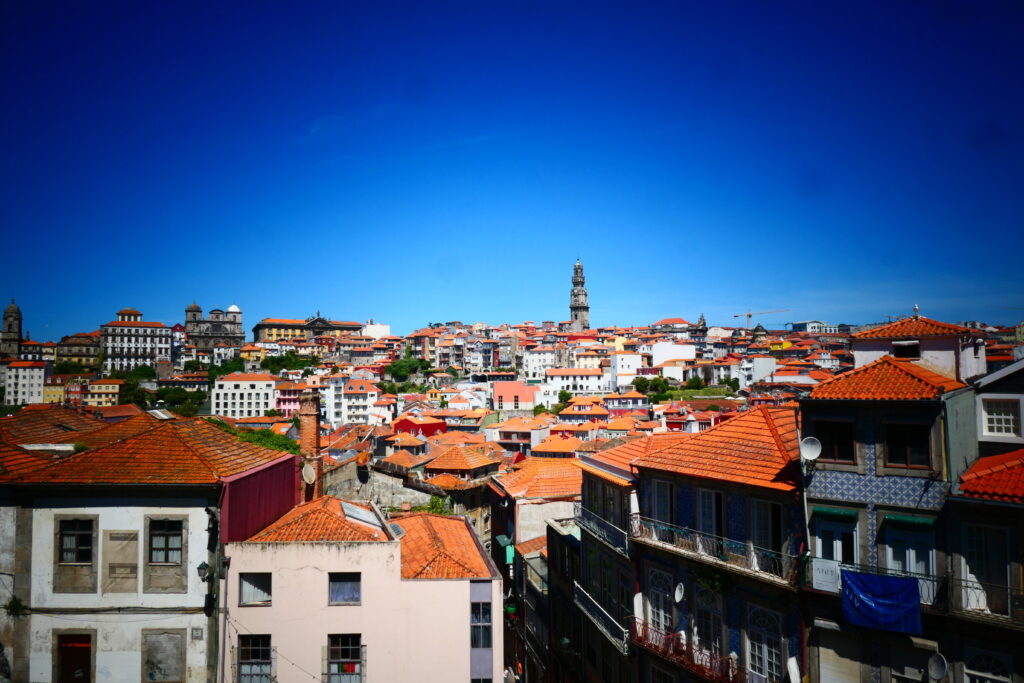

Tomar
Tomar is an ancient, enchanting and slightly mystical, small city in central Portugal. It was set up by the Order of the Knights Templar in 1160 in order to become their Portuguese headquarters. It’s full of interesting history and is well worth a visit.
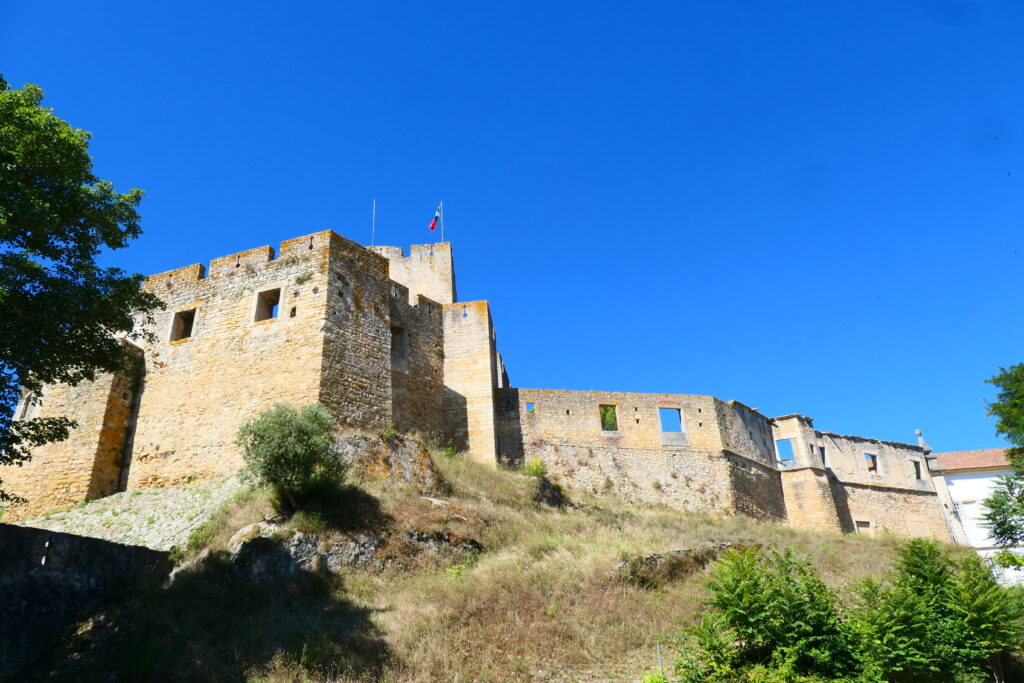
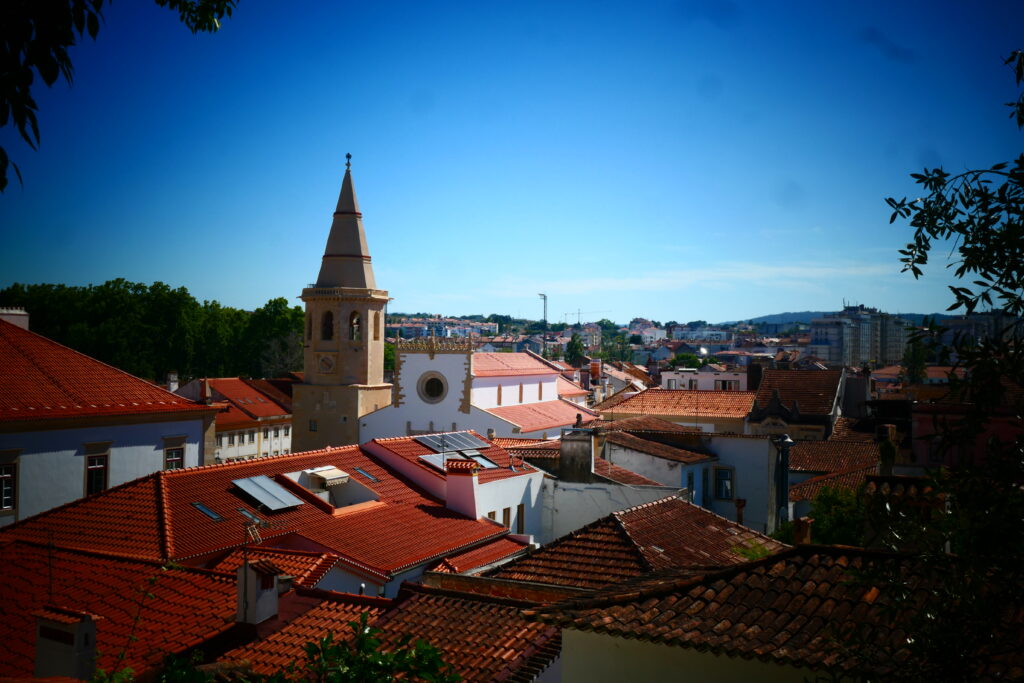
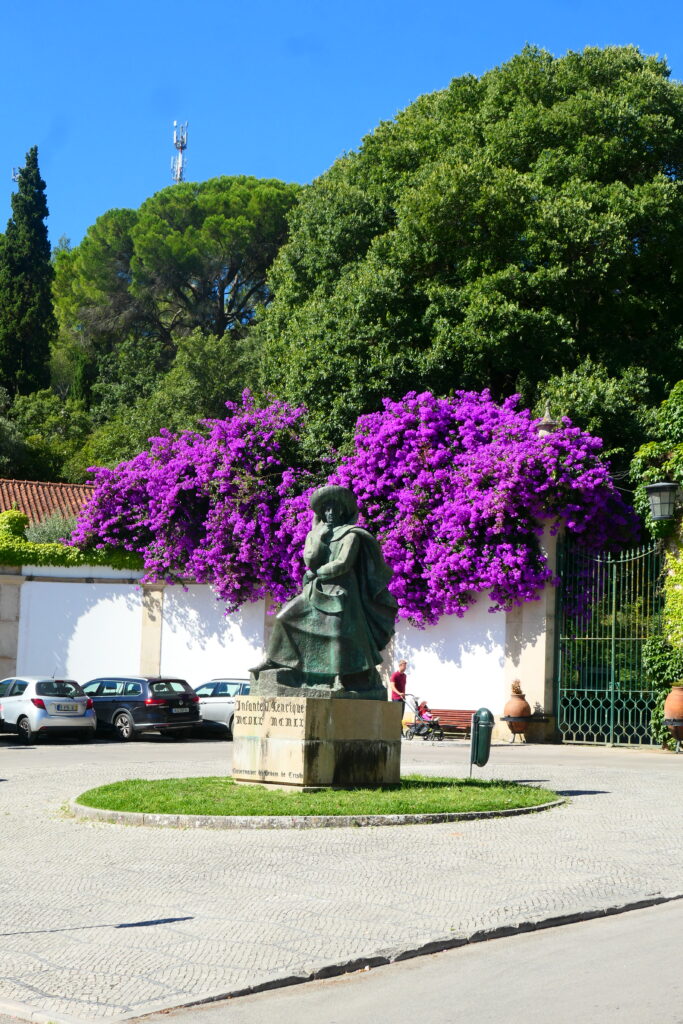
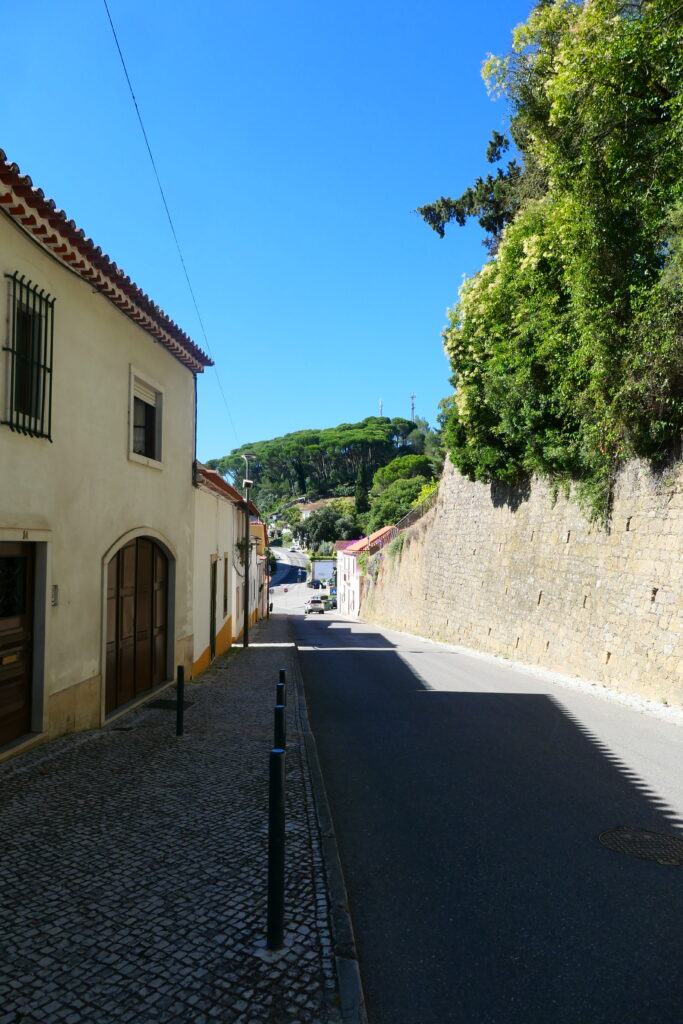
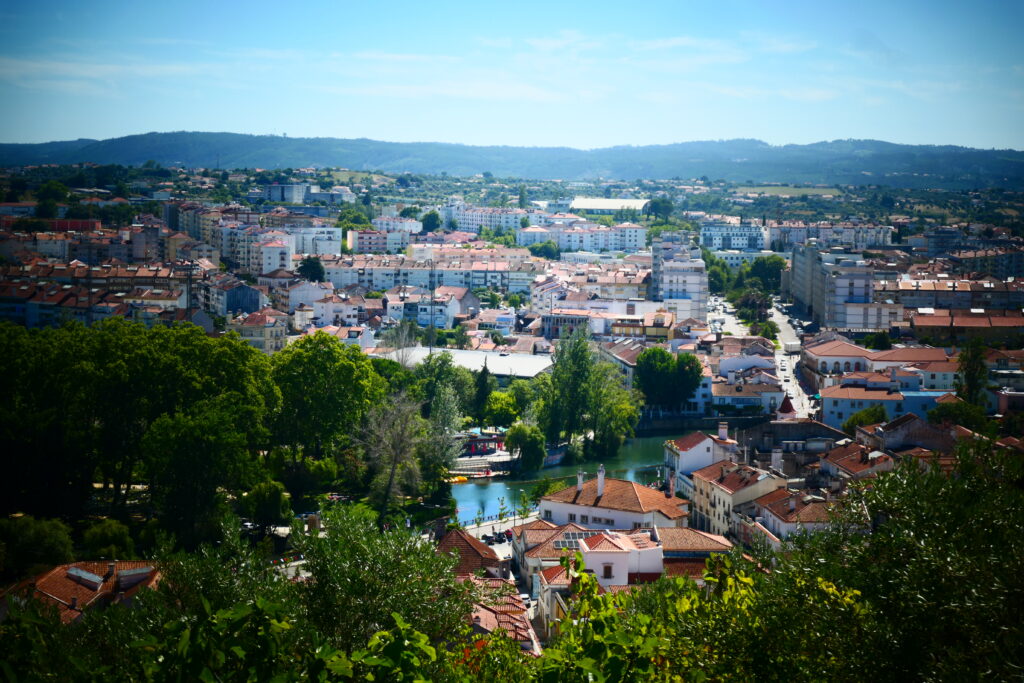

Vila Real
Vila Real is a small, pretty city in north eastern Portugal, housing about 30,000 people (2021). To the west of the city can be seen the Alvão and Marão mountains, at 4,600ft (1,400m) above sea level.
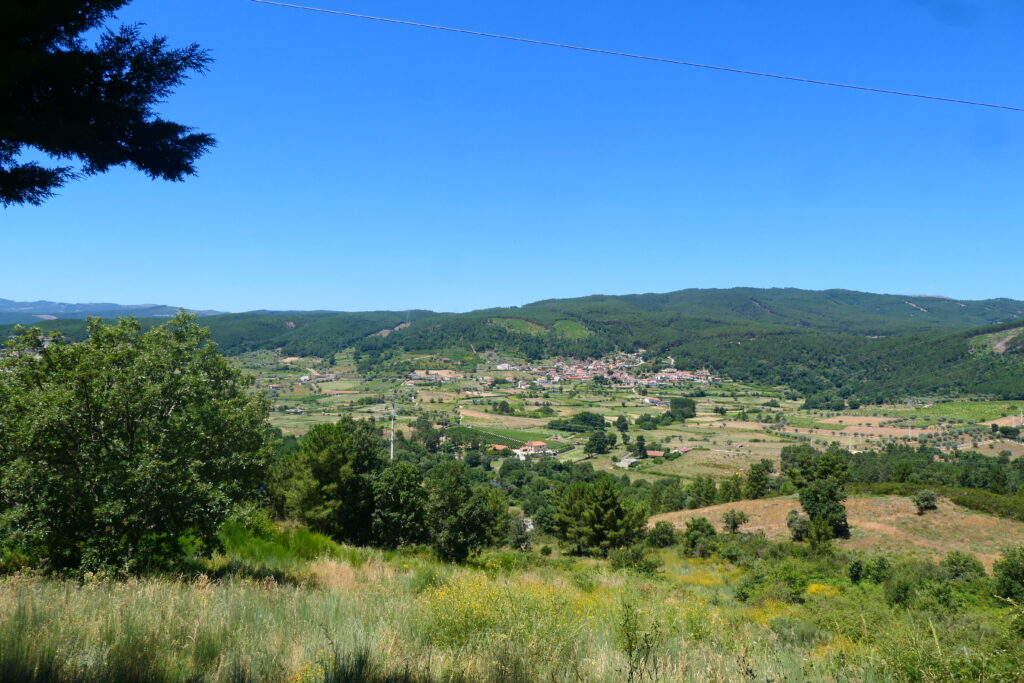
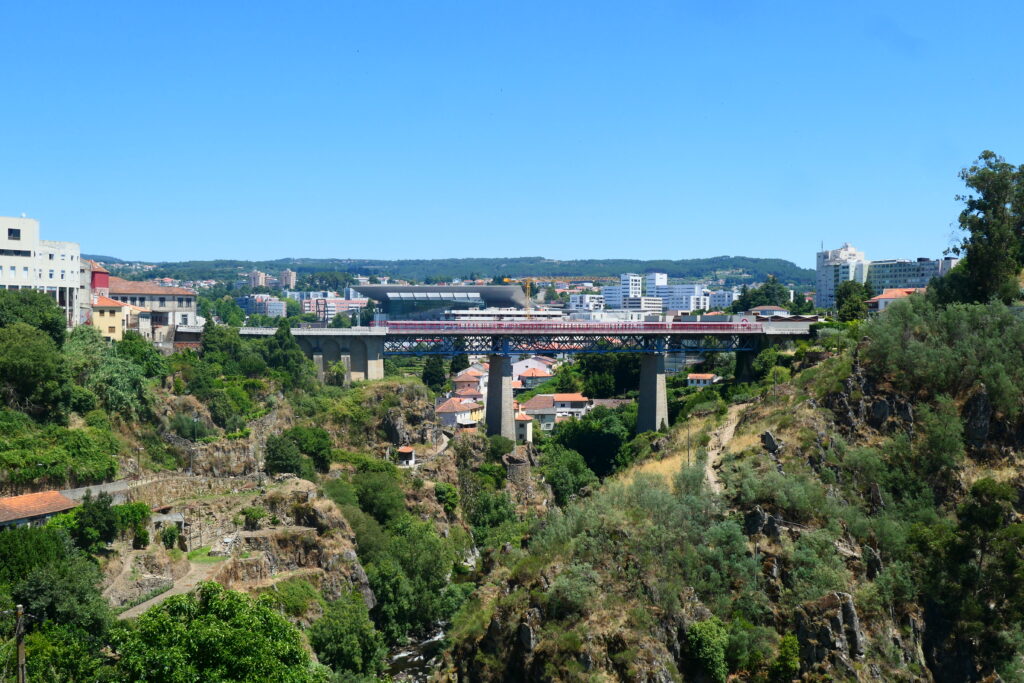
Our favourite places in Madeira
Madeira is an archipelago situated in the North Atlantic Ocean about 325 miles west of Morocco. It’s an autonomous region of Portugal, and along with the Azores, sits within Macronesia.
It’s actually the top of a massive volcano, and because of this the roads along the coast and over the volcano inland provide some fantastic views. You often find yourself driving though and over the top of the clouds.
It’s very different to mainland Portugal, and the people are different too. If you’ve never been, and you love driving on awesome roads and seeing incredible views, you should definitely consider it.
Porto Moniz, Madeira
We stayed in Porto Moniz, which has natural volcanic pools that you can bathe in, and is surrounded by the steep sides of the volcano. Our hotel was literally on the ocean font, and during a storm the waves came right up to the hotel – both spectacular and exhilarating!
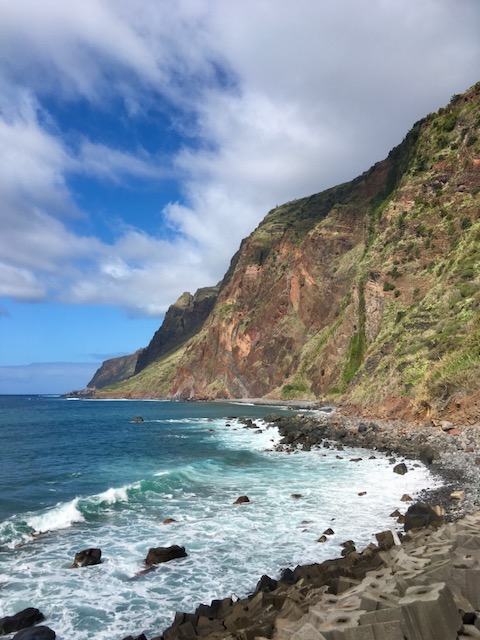

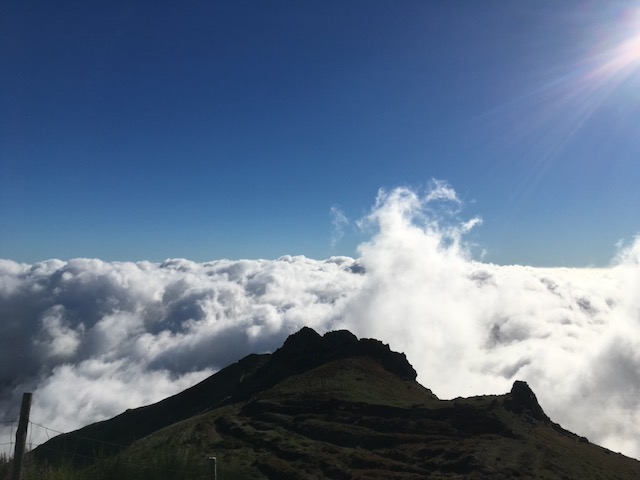
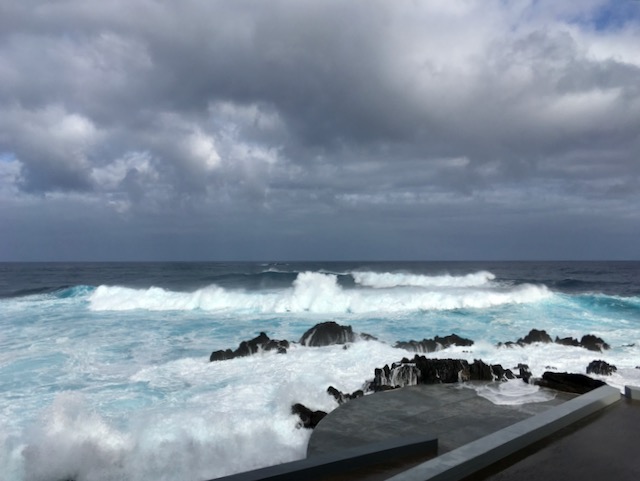
What’s it like to drive in Portugal?
As with almost everywhere on the continent of Europe, they drive on the right hand side of the road in Portugal.
Driving in Portugal is a leisurely affair. There is no overuse of car horns and people do not tend to tailgate you. Drivers are also more polite than in the UK or France for example.
Do you require an international driving permit in Portugal?
We’ve created a dedicated page to driving abroad, which answers this question, and more, which you might find helpful.
Can you use your UK driving license when driving through Portugal?
We’ve created a dedicated page to driving abroad, which answers this question, and more, which you might find helpful.
Do I need a carnet de passages to drive in Portugal?
We’ve created a dedicated page to driving abroad, which answers this question, and more, which you might find helpful.
What are the speed limits in Portugal?
The speed limits for cars in Portugal are:
- 30 mph (50 km/h) for urban driving
- 55 mph (90 km/h) outside of built up areas
- 60 mph (100 km/h) on dual carriageways
- 75 mph (120 km/h) on motorways
What currency do they use in Portugal?
In Portugal they use the Euro. The use of credit / debit cards is now widespread. ApplePay is widely accepted in petrol stations and most stores in major towns. Travellers cheques are accepted. There are lots of ATMs.
You should make yourself aware of the amount that your bank charges you for using credit and debit cards abroad. Often credit cards are cheaper for purchasing items directly, and for withdrawing cash from ATMs.
What language do they speak in Portugal?
They speak Portuguese in Portugal, although many also Speak English in particular the younger generations, and in tourist areas.
What time zone is Portugal in?
Remember, when you’re planning your next trip to take a look at what time zone it’s in.
Do I need a visa to visit Portugal?
We’ve created a dedicated, more comprehensive page on visas, which you should find helpful. Check it out!
Is wild camping legal in Portugal?
No, wild camping is illegal in Portugal.
What plug / socket type do they use in Portugal?

In Portugal they use plug / socket type F.
Health issues in Portugal
Is it safe to drink water in Portugal?
Yes, it is safe to drink tap water in Portugal. Bottled water is also readily available across the country.
What vaccinations are required for Portugal?
This NHS website is kept up to date with all relevant information on vaccinations in Portugal.
Phones in Portugal
What is the country calling code for Portugal?
The country calling code for Andorra is +351
What are the emergency phone numbers in Portugal?
- The emergency number for police in Portugal is: 112
- In Portugal, the emergency number for ambulance is: 112
- The emergency number for fire in Portugal is: 112
If you’ve got some useful info that you’d like to share, let us know!
And don’t forget to check out all the other pictures!
